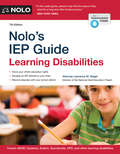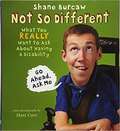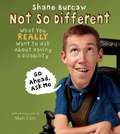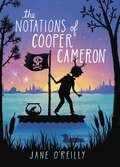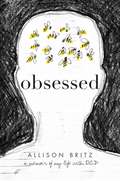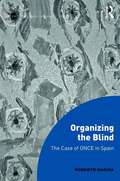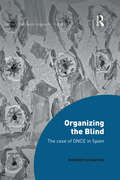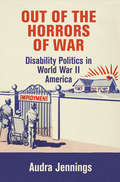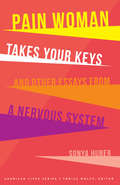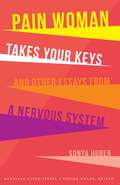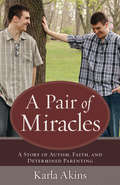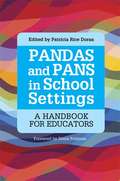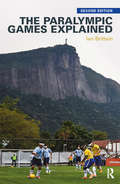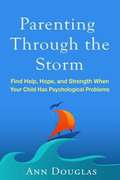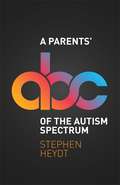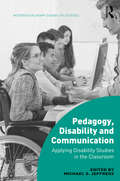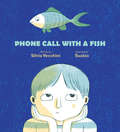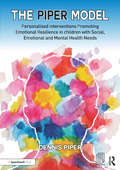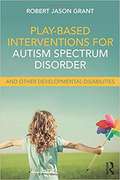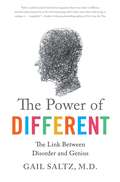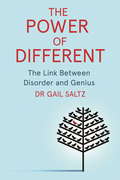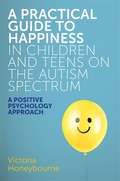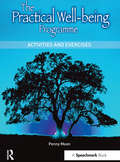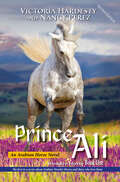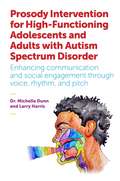- Table View
- List View
Nolo's IEP Guide: Learning Disabilities
by Lawrence SiegelHow to advocate for your child's education. According to the National Center for Learning Disabilities, 2.4 million children in the U.S. are diagnosed with learning disabilities – and these children have unique educational needs. While federal law entitles each of these children to an “appropriate” education, making sure teachers and school administrators are addressing a child’s special needs and providing the proper services can feel like an uphill battle. This book will help guide you through your child’s IEP process by explaining your child’s rights and teaching you how to draft educational goals and objectives, research school programs and alternatives, prepare for IEP meetings, and resolve disputes with your school district. Learn how to : identify a learning disability understand your child's rights to education untangle eligibility rules and evaluations prepare and make your best case to school administrators develop IEP goals and advocate for their adoption, explore and choose the best programs and services. Nolo's IEP Guide: Learning Disabilities is written by an expert who's fought for kids for many years.
Not So Different
by Shane BurcawNot So Different offers a humorous, relatable, and refreshingly honest glimpse into Shane Burcaw’s life. Shane tackles many of the mundane and quirky questions that he’s often asked about living with a disability, and shows readers that he’s just as approachable, friendly, and funny as anyone else. Shane Burcaw was born with a rare disease called spinal muscular atrophy, which hinders his muscles’ growth. As a result, his body hasn’t grown bigger and stronger as he’s gotten older―it’s gotten smaller and weaker instead. This hasn’t stopped him from doing the things he enjoys (like eating pizza and playing sports and video games) with the people he loves, but it does mean that he routinely relies on his friends and family for help with everything from brushing his teeth to rolling over in bed.
Not So Different: What You Really Want to Ask About Having a Disability
by Shane BurcawNot So Different offers a humorous, relatable, and refreshingly honest glimpse into Shane Burcaw’s life. Shane tackles many of the mundane and quirky questions that he’s often asked about living with a disability, and shows readers that he’s just as approachable, friendly, and funny as anyone else.Shane Burcaw was born with a rare disease called spinal muscular atrophy, which hinders his muscles’ growth. As a result, his body hasn’t grown bigger and stronger as he’s gotten older—it’s gotten smaller and weaker instead. This hasn’t stopped him from doing the things he enjoys (like eating pizza and playing sports and video games) with the people he loves, but it does mean that he routinely relies on his friends and family for help with everything from brushing his teeth to rolling over in bed.A Chicago Public Library Best Book of 2017
The Notations of Cooper Cameron (No Series)
by Jane O'ReillyEleven-year-old Cooper Cameron likes things to be in order. When he eats, he chews every bite three times on each side. Sometimes he washes his hands in the air with invisible water. He invented these rituals after the death of his beloved grandfather to protect others he loves from terrible harm. But when Cooper's behavior drives a wedge between his parents, and his relationship with his older sister, Caddie, begins to fray, his mother's only solution is to take Cooper and Caddie to the family cabin for the summer. Armed with a collection of rocks, his pet frog, and his notebook, Cooper vows to cure himself and bring his damaged family back together.
Obsessed: A Memoir of My Life with OCD
by Allison BritzA brave teen recounts her debilitating struggle with obsessive-compulsive disorder—and brings readers through every painful step as she finds her way to the other side—in this powerful and inspiring memoir.Until sophomore year of high school, fifteen-year-old Allison Britz lived a comfortable life in an idyllic town. She was a dedicated student with tons of extracurricular activities, friends, and loving parents at home. But after awakening from a vivid nightmare in which she was diagnosed with brain cancer, she was convinced the dream had been a warning. Allison believed that she must do something to stop the cancer in her dream from becoming a reality. It started with avoiding sidewalk cracks and quickly grew to counting steps as loudly as possible. Over the following weeks, her brain listed more dangers and fixes. She had to avoid hair dryers, calculators, cell phones, computers, anything green, bananas, oatmeal, and most of her own clothing. Unable to act “normal,” the once-popular Allison became an outcast. Her parents questioned her behavior, leading to explosive fights. When notebook paper, pencils, and most schoolbooks were declared dangerous to her health, her GPA imploded, along with her plans for the future. Finally, she allowed herself to ask for help and was diagnosed with obsessive-compulsive disorder. This brave memoir tracks Allison’s descent and ultimately hopeful climb out of the depths.
Organizing the Blind: The Case of ONCE in Spain (Interdisciplinary Disability Studies)
by Roberto GarvíaThis book is a case study which narrates the history of the National Organization of the Spanish Blind (ONCE), established in 1937 during the Spanish Civil War. Contrary to other affluent countries where most blind people live on welfare benefits, the Spanish blind enjoy full employment. Furthermore, the average income of the Spanish blind is higher than that of the sighted. Why is this so? Why the blind, and not the deaf mute, or any other group of disabled people? This book shows that ONCE answers these questions.
Organizing the Blind: The Case of ONCE in Spain (Interdisciplinary Disability Studies)
by Roberto Garvía<P>This book is a case study which narrates the history of the National Organization of the Spanish Blind (ONCE), established in 1937 during the Spanish Civil War. Contrary to other affluent countries where most blind people live on welfare benefits, the Spanish blind enjoy full employment. Furthermore, the average income of the Spanish blind is higher than that of the sighted. Why is this so? Why the blind, and not the deaf mute, or any other group of disabled people? This book shows that ONCE answers these questions. <P>The book explains ONCE'S origins, the shifting strategies that the organization has pursued to adapt to an ever-changing environment, its original goals and the way they have mutated and been interpreted, its conflicting relationship with an authoritarian regime, its struggle to find its place in a democratic regime, and its relations with other groups of disabled people. A historical narrative, the book lies at the intersection between disability and organization studies, history and sociology. <P>It will be of interest to all scholars of disability studies, the sociology of work, the history of medicine and contemporary Spanish history.
Out of the Horrors of War: Disability Politics in World War II America (Politics and Culture in Modern America)
by Audra JenningsFrom workplace accidents to polio epidemics and new waves of immigration to the returning veterans of World War II, the first half of the twentieth century brought the issue of disability—what it was, what it meant, and how to address it—into national focus. Out of the Horrors of War: Disability Politics in World War II America explores the history of disability activism, concentrating on the American Federation of the Physically Handicapped (AFPH), a national, cross-disability organization founded during World War II to address federal disability policy. Unlike earlier disability groups, which had been organized around specific disabilities or shared military experience, AFPH brought thousands of disabled citizens and veterans into the national political arena, demanding equal access to economic security and full citizenship. At its core, the AFPH legislative campaign pushed the federal government to move disabled citizens from the margins to the center of the welfare state.Through extensive archival research, Audra Jennings examines the history of AFPH and its enduring legacy in the disability rights movement. Counter to most narratives that place the inception of disability activism in the 1970s, Jennings argues that the disability rights movement is firmly rooted in the politics of World War II. In the years immediately following the war, leaders in AFPH worked with organized labor movements to advocate for an ambitious political agenda, including employer education campaigns, a federal pension program, improved access to healthcare and education, and an affirmative action program for disabled workers. Out of the Horrors of War extends the arc of the disability rights movement into the 1940s and traces how its terms of inclusion influenced the movement for decades after, leading up to the Americans with Disabilities Act of 1990.
Pain Woman Takes Your Keys, and Other Essays from a Nervous System (American Lives)
by Sonya HuberRate your pain on a scale of one to ten. What about on a scale of spicy to citrus? Is it more like a lava lamp or a mosaic? Pain, though a universal element of human experience, is dimly understood and sometimes barely managed. Pain Woman Takes Your Keys, and Other Essays from a Nervous System is a collection of literary and experimental essays about living with chronic pain. Sonya Huber moves away from a linear narrative to step through the doorway into pain itself, into that strange, unbounded reality. Although the essays are personal in nature, this collection is not a record of the author’s specific condition but an exploration that transcends pain’s airless and constraining world and focuses on its edges from wild and widely ranging angles. Huber addresses the nature and experience of invisible disability, including the challenges of gender bias in our health care system, the search for effective treatment options, and the difficulty of articulating chronic pain. She makes pain a lens of inquiry and lyricism, finds its humor and complexity, describes its irascible character, and explores its temperature, taste, and even its beauty.
Pain Woman Takes Your Keys and Other Essays from a Nervous System (American Lives Series)
by Sonya HuberRate your pain on a scale of one to ten. What about on a scale of spicy to citrus? Is it more like a lava lamp or a mosaic? Pain, though a universal element of human experience, is dimly understood and sometimes barely managed. Pain Woman Takes Your Keys, and Other Essays from a Nervous System is a collection of literary and experimental essays about living with chronic pain. Sonya Huber moves away from a linear narrative to step through the doorway into pain itself, into that strange, unbounded reality. Although the essays are personal in nature, this collection is not a record of the author’s specific condition but an exploration that transcends pain’s airless and constraining world and focuses on its edges from wild and widely ranging angles. <p><p> Huber addresses the nature and experience of invisible disability, including the challenges of gender bias in our health care system, the search for effective treatment options, and the difficulty of articulating chronic pain. She makes pain a lens of inquiry and lyricism, finds its humor and complexity, describes its irascible character, and explores its temperature, taste, and even its beauty.
Pair of Miracles, A: A Story of Autism, Faith, and Determined Parenting
by Karla Akins"A parent's gripping journey of awareness, acceptance, and appreciation of her two boys dealing with significant challenges brought on by autism."--Stephen Mark Shore, EdDWhen Karla Akins hoped that her autistic sons could learn to read and function independently, doctors warned her that those expectations would never be met. She set out to prove that, despite those warnings, all things are possible through God.Laced with humor and compassion, A Pair of Miracles is the heartwarming story of her journey rearing adopted twin sons, each diagnosed with autism and fetal alcohol disorder. This is more than a moving biography from a mom on the front lines, however. It is a powerful tool, full of practical help for parents, educators, and church members working with children who have intellectual disabilities, speech impairments, and other limitations on the autism spectrum. It is also a challenge to the church to welcome and celebrate all the members of their congregation, no matter their abilities.Thanks to Karla's determination, faith, and unconditional love--and contrary to the doctors' predictions--her adult twins are now able to function independently in many ways. They help their dad install pools, do carpentry work, and serve in the church as ushers, sound engineers, and children's ministry workers.For parents seeking hope, answers, and peace, Karla leads the way to all three down a path she's already been.
PANDAS and PANS in School Settings: A Handbook for Educators
by Margo Thienemann Kathleen Stein Diana Pohlman Amy Mazur Kandace M. Hoppin Janice Tona Patricia Rice Doran Darlene FewsterPANDAS (Pediatric Autoimmune Neuropsychiatric Disorders Associated with Strep) and PANS (Pediatric Acute-Onset Neuropsychiatric Syndrome) occur when an abnormal immune response produces brain inflammation, leading to unusual psychological symptoms in children. Symptoms can include OCD, tics, ADHD, anxiety disorders, sensory issues and marked personality changes. This practical handbook explains how educators can distinguish between these symptoms and pre-existing conditions, and offers strategies for supporting students with PANDAS and PANS in school settings. Contributions from experts provide educators with the understanding needed to be able to collaboratively identify PANDAS and PANS, and carry out effective interventions. As the rate of incidence of PANDAS and PANS increases, this book will be an essential resource for school staff in getting to grips with these complex disorders and overcoming the challenges they present.
The Paralympic Games Explained: Second Edition
by Ian BrittainThe Paralympic Games is the second largest multi-sport festival on earth and an event which poses profound and challenging questions about the nature of sport, disability and society. The Paralympic Games Explained is the first complete introduction to the Paralympic phenomenon, exploring every key aspect and issue, from the history and development of the Paralympic movement to the economic and social impact of the contemporary Games. Now in a fully revised and updated second edition, it includes new material on hosting and legacy, Vancouver 2010 to Rio 2016, sport for development, and case studies of an additional ten Paralympic nations. Drawing on a range of international examples, it discusses key issues such as: • how societal attitudes influence disability sport • the governance of Paralympic and elite disability sport • the relationship between the Paralympics and the Olympics • drugs and technology in disability sport • classification in disability sport. Containing useful features including review questions, study activities, web links and guides to further reading throughout, The Paralympic Games Explained is the most accessible and comprehensive guide to the Paralympics currently available. It is essential reading for all students with an interest in disability sport, sporting mega-events, the politics of sport, or disability in society.
Parenting Through the Storm: Find Help, Hope, and Strength When Your Child Has Psychological Problems
by Ann DouglasRaising a child or teenager with a psychological condition is a "perfect storm" of stress, sadness, and uncertainty. How can you find the best treatments and help your child overcome emotional, behavioral, and academic challenges--while keeping yourself and your family strong? As a parent, you may feel isolated and alone, but the reality is that a lot of families are in the same boat. Ann Douglas knows firsthand just how daunting it can be. In this compassionate and empowering guide, she combines the vital lessons she has learned with vivid stories from other parents and advice from leading psychologists. Several record-keeping forms can be downloaded and printed for repeated use. The book cuts through the often-confusing clinical jargon and speaks from the heart about what matters most: the well-being of your child.
A Parents' ABC of the Autism Spectrum
by Stephen HeydtCovering everything from Anxiety to Fragile-X Syndrome, Stephen Heydt provides an alphabetical categorisation of the possible issues a child with autism spectrum disorder (ASD) may encounter. Written by an experienced clinical psychologist, this book offers information for parents whose children have been diagnosed with ASD, and is presented in an easy-to-use A to Z format. In a return to core understandings of ASD, the author translates difficult behavioural issues into practical information and strategies. Designed for parents and carers in a methodical order, A Parent's ABC of the Autism Spectrum will help explain the challenges of living with childhood ASD.
Pedagogy, Disability and Communication: Applying Disability Studies in the Classroom (Interdisciplinary Disability Studies)
by Michael JeffressResearch has long substantiated the fact that living with a disability creates significant and complex challenges to identity negotiation, the practice of communication, and the development of interpersonal relationships. Furthermore, individuals without disabilities often lack the knowledge and tools to experience self-efficacy in communicating with their differently-abled peers. So how do these challenges translate to the incorporation of disability studies in a classroom context and the need to foster an inclusive environment for differently-abled students? <p><p> Bringing together a range of perspectives from communication and disability studies scholars, this collection provides a theoretical foundation along with practical solutions for the inclusion of disability studies within the everyday curriculum. It examines a variety of aspects of communication studies including interpersonal, intercultural, health, political and business communication as well as ethics, gender and public speaking, offering case study examples and pedagogical strategies as to the best way to approach the subject of disability in education. <p> It will be of interest to students, researchers and educators in communication and disability studies as well as scholars of sociology and social policy, gender studies, public health and pedagogy. It will also appeal to anyone who has wondered how to bring about a greater degree of inclusion and ethics within the classroom.
Phone Call with a Fish
by Silvia VecchiniA story for anyone who has felt like a fish out of water There&’s a boy in class who doesn&’t say anything. He doesn&’t yell when a student steps on his foot, and he writes his answers to the teacher&’s questions on the board. One of his classmates is trying to understand why he&’s so quiet, but she can&’t figure it out. But then one day the class goes to the science museum, and she discovers a phone with an aquarium full of fish on the other end of the line. And the fish, as it turns out, aren&’t silent after all—they just have their own way of communicating. This empathy-building story will encourage readers to approach others with compassion and understanding.
The Piper Model: Personalised Interventions Promoting Emotional Resilience in children with Social, Emotional and Mental Health Needs
by Dennis PiperThis book is intended to be both a practical evidence-based tool and an awareness-raising resource for teachers, teaching assistants, mentors and all adults who work with children and young people who present as 'extremely challenging' in the school context. In every school there are a small number of pupils, less than five percent, who take up more than fifty percent of the staff's time. This book provides school staff with an approach to personalised interventions that enable those children or young people to build life-long resilience skills.
Play-Based Interventions for Autism Spectrum Disorder and Other Developmental Disabilities
by Robert Jason GrantPlay-Based Interventions for Autism Spectrum Disorder and Other Developmental Disabilities contains a wide selection of play therapy interventions for use with children and adolescents with autism spectrum disorders, dysregulation issues, or other neurodevelopmental disorders. <P><P>The structured interventions focus on improvement in social skills, emotional regulation, connection and relationship development, and anxiety reduction. Special considerations for implementing structured interventions and an intervention tracking sheet are also presented. <P><P>This valuable tool is a must have for both professionals and parents working on skill development with these populations.
The Power of Different: The Link Between Disorder and Genius
by Gail SaltzA powerful and inspiring examination of the connection between the potential for great talent and conditions commonly thought to be “disabilities,” revealing how the source of our struggles can be the origin of our greatest strengths. InThe Power of Different, psychiatrist and bestselling author Gail Saltz examines the latest scientific discoveries, profiles famous geniuses who have been diagnosed with all manner of brain “problems”--including learning disabilities, ADD, anxiety, Depression, Bipolar disorder, schizophrenia, and Autism--and tells the stories of lay individuals to demonstrate how specific deficits in certain areas of the brain are directly associated with the potential for great talent. Saltz shows how the very conditions that cause people to experience difficulty at school, in social situations, at home, or at work, are inextricably bound to creative, disciplinary, artistic, empathetic, and cognitive abilities. In this pioneering work, readers will find engaging scientific research and stories from historical geniuses and everyday individuals who have not only made the most of their conditions, but who have flourished because of them. They are leaning into their brain differences to: *Identify areas of interest and expertise *Develop work arounds *Create the environments that best foster their talents *Forge rewarding interpersonal relationships. Enlightening and inspiring,The Power of Different proves that the unique wiring of every brain can be a source of strength and productivity, and contributes to the richness of our world.
The Power of Different: The Link Between Disorder and Genius
by Dr. Gail SaltzThe Power of Different is an illuminating and uplifting examination of the link between brain differences and aptitude. Psychologist and bestselling author Gail Saltz presents the latest scientific research and profiles famous geniuses and lay individuals who have been diagnosed with all manner of brain 'problems' - including learning disabilities, ADD, anxiety, depression, bipolar disorder, schizophrenia and autism. Saltz shows that the source of our struggles can be the origin of our greatest strengths. Rooted in her experience as a professor and practicing psychiatrist, and based on the latest neurological research, Saltz demonstrates how specific deficits in certain areas of the brain are directly associated with the potential for great talent. She also shows how the very conditions that can cause difficulty at school, in social situations, at home or at work, are bound to creative, disciplinary, artistic, empathetic and cognitive abilities.In this pioneering work, readers will find engaging scientific research and stories from historical geniuses and everyday individuals who have not only made the most of their conditions, but who have flourished because of them. Enlightening and inspiring, The Power of Different shows how the unique wiring of every brain can be a source of strength and productivity, and can contribute to the richness of our world.
A Practical Guide to Happiness in Children and Teens on the Autism Spectrum: A Positive Psychology Approach
by Victoria HoneybourneFull of simple strategies for happiness in children and teens with autism, this book is a must read for anyone dedicated to the wellbeing of a child on the spectrum. Bringing a refreshingly positive approach to mental health and autism, the guide is full of practical ideas for helping children strengthen their self-worth, optimism and receptivity to happiness. It also reveals how children can build resilience and better understand their feelings, giving them the skills to flourish and thrive and to ward off negative thoughts. The activities are ideal for all learning levels and can be done individually or in groups, at home or in the classroom. Talking about mental health in autism is all too often reduced to ways of 'curing illness' - this book helps to prevent poor mental health by making happiness a priority and an attainable goal.
The Practical Well-Being Programme: Activities and Exercises
by Penelope MoonThis book is intended for all those interested in well being and a holistic approach whether it is in schools colleges, social settings, family support or business. The development of the programmes came out of work in Liverpool supporting families of children with severe emotional and behavioural difficulties. This book introduces readers to the underlying principles and approaches associated with a holistic approach to well-being in educational and other social contexts. Originally a specialised 'within schools' programme of therapeutic support for pupils experiencing social, behavioural and /or emotional difficulties. Based on the concept of 'holism' in its fullest sense, it utilises both traditional and complementary approaches in support of the whole person - mind, emotions, body and spirit, in the context of their whole life, incorporating support for the individual, the family, school staff within the environment and where applicable, the wider community. Each chapter consists of two main parts: information and background; activities that may be used by the teacher as well as in the classroom. The exercises at the end of each chapter are developmental in nature and divided into: Reflective Journal - encourage reflective practises and the development of emotional and spiritual intelligence by recording feeling as well as thoughts and actions; wordsmith - to encourage the development of interest in words, playing with words and defining their terms, interpreting meaning and investigating their source, etc; Activities - Knowledge tree - using the internet to develop their own knowledge tree and allow imagination to develop; activities for the classroom - fun ideas that reflect the key points of each chapter; and Things to do - ideas to develop outside the classroom, places to go, etc. The book also includes Guided Visualisation- learning through the use of 'altered states' and relaxation exercises. These include a series of guided visualisations which include physical, emotional, intellectual and creative practices. It covers A5 paperback+ CD, 162 pages.
Prince Ali: An Arabian Horse Novel
by Victoria Hardesty and Nancy PerezPrince Ali had everything: talent, charisma, and a devoted best friend, Becky Howard. He won every time he set a hoof in a show ring. He garnered more fans from personal and TV appearances. Becky was with him every step of the way, even riding him in the Swallows Day Parade in their hometown, San Juan Capistrano. Disaster struck when two thugs put Becky in a coma, drugged him and dragged Prince Ali off to sell for diabolical purposes. When their buyer realized who Ali was, he nixed the deal. That landed the pampered show horse high in the mountains in late March. One night, a week later, he discovered the corral gate unlatched. Prince Ali mustered every ounce of strength, courage, and stamina he had to walk into the wilderness searching for the best friend he couldn't live without.
Prosody Intervention for High-Functioning Adolescents and Adults with Autism Spectrum Disorder: Enhancing communication and social engagement through voice, rhythm, and pitch
by Michelle Dunn Larry Harris Julia DunnProviding lessons for prosody intervention in high-functioning adolescents and young adults with Autism Spectrum Disorder (ASD), this book helps to develop verbal and nonverbal skills to aid their transition into adulthood through a program of evidence-based lessons and resources. The authors offer a complete curriculum of lessons taking student from self-calming to fluency and conversational skills and thereby enhancing their communication skills and conversational competence, skills that are essential for the ability to get on in adult life, for example in the context of looking for a job. The curriculum includes lesson plans, handouts and homework, and builds on some of the characteristic traits of high-functioning autism, for example by setting up sets of rules for clarity. The program has been successfully used by the authors in their work with people on the autism spectrum and will be a life-changing resource for professionals as well as for parents and people on the autism spectrum wanting to improve their ability to communicate well.
